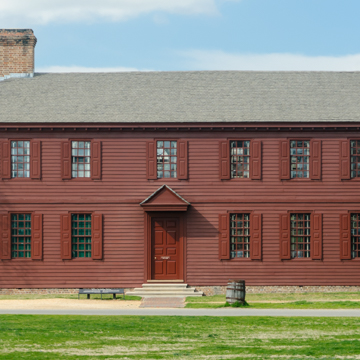The Randolph House illustrates the development of an eighteenth-century property at the level of elite accommodation. William Robertson, clerk of the Governor's Council from 1698 until 1739, built the square house facing the side street in 1715–1718. It contained a small corner passage and three rooms on both floors. In 1754, Peyton Randolph, later Speaker of the House of Burgesses, transformed it into a seven-bay-long edifice facing Market Square, containing a grand new stair passage, dining room, and bedchamber with closets. Likewise, Randolph and his father transformed Robertson's motley collection of tenements in the rear yard into an impressive ensemble of service buildings used to support their household.
You are here
Peyton Randolph House
c. 1715–1718, c. 1752, c. 1850. 1939–1941, 1968, restorations. 1997–1999, reconstruction of outbuildings. Nicholson St. east of N. England St.
If SAH Archipedia has been useful to you, please consider supporting it.
SAH Archipedia tells the story of the United States through its buildings, landscapes, and cities. This freely available resource empowers the public with authoritative knowledge that deepens their understanding and appreciation of the built environment. But the Society of Architectural Historians, which created SAH Archipedia with University of Virginia Press, needs your support to maintain the high-caliber research, writing, photography, cartography, editing, design, and programming that make SAH Archipedia a trusted online resource available to all who value the history of place, heritage tourism, and learning.






